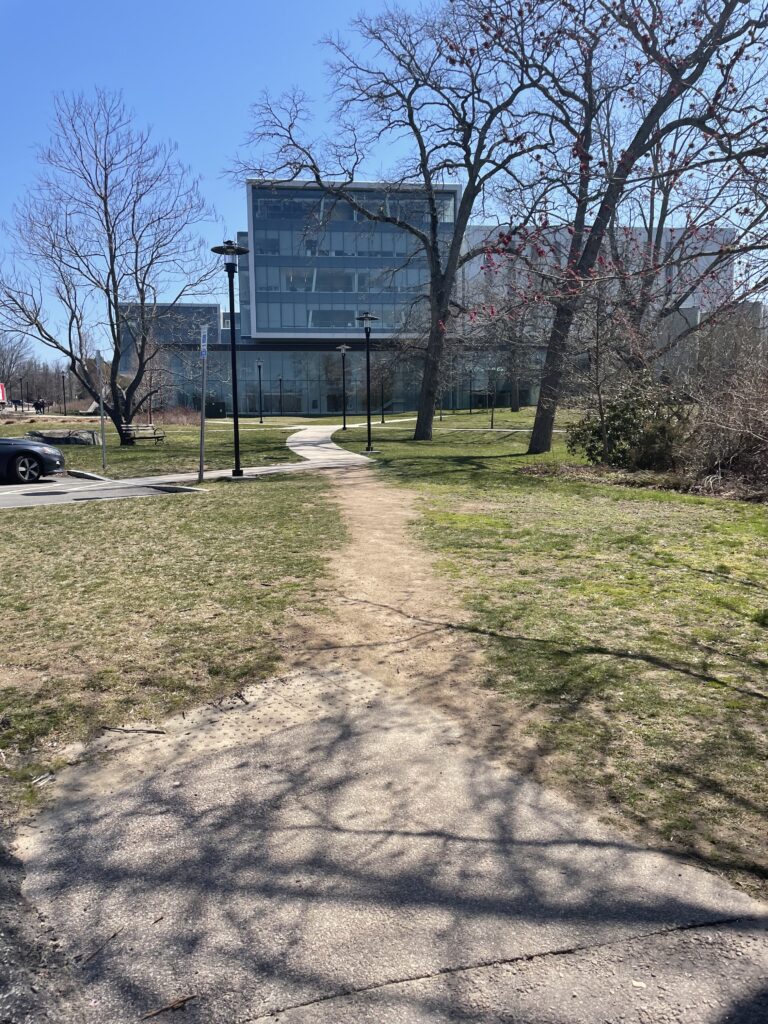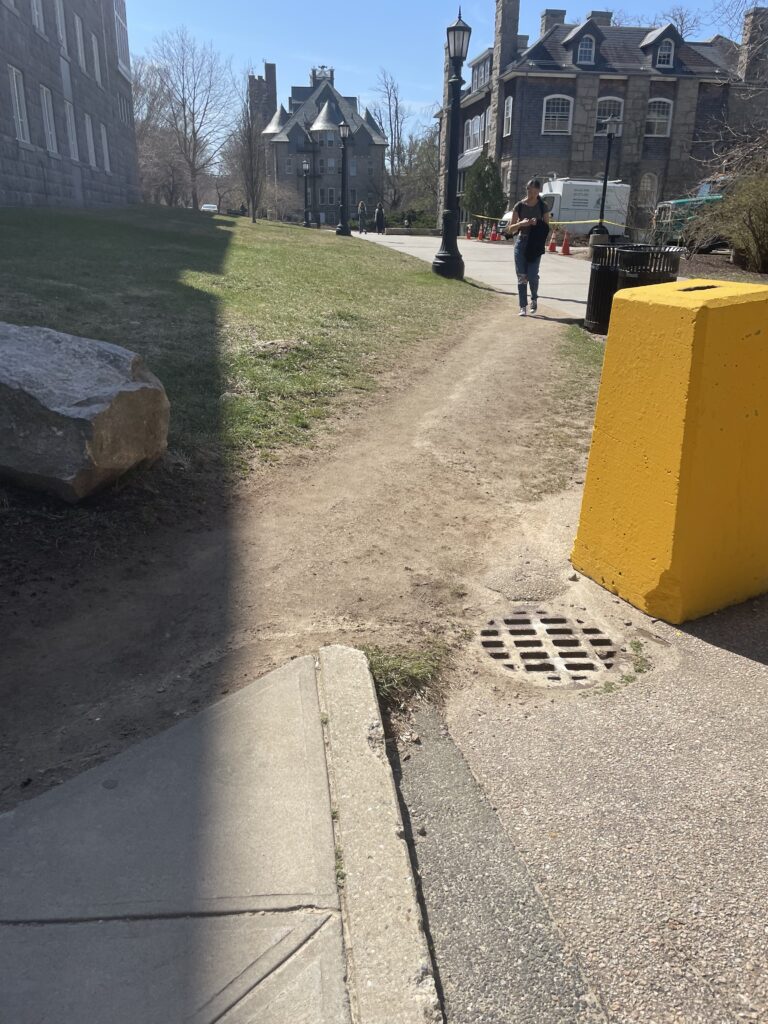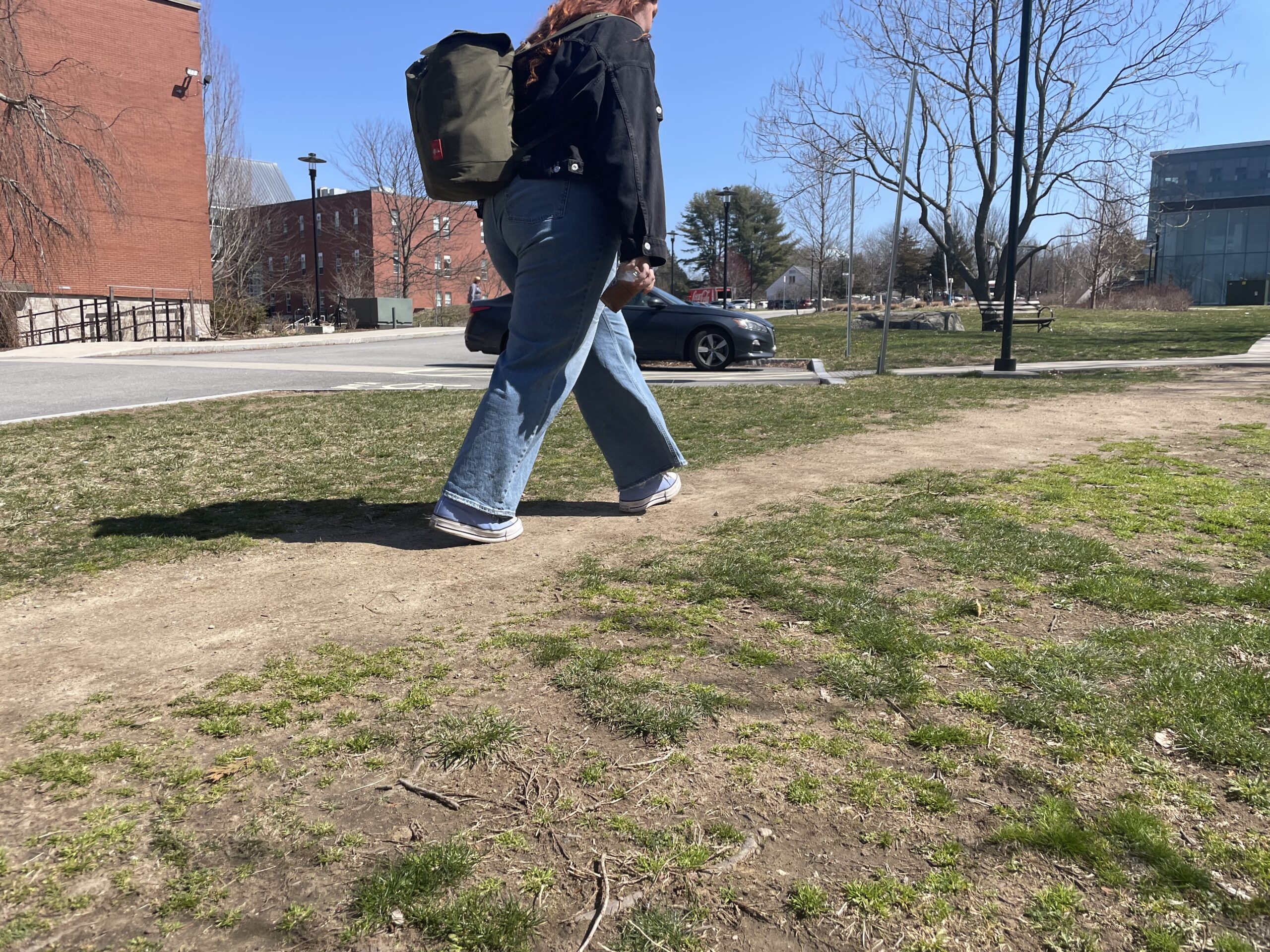Desired paths can be found around URI’s campus. PHOTO CREDIT: Maddie Bataille | Photo Editor
Thought of to be an exercise of free will, desire paths are informal pathways formed by pedestrians or other travelers that carve out a trail considered to be more desirable than formal sidewalks or infrastructure, according to Geography Realm, a geography magazine.
Desire paths say a lot about society, according to Scott Kushner, associate professor of communications, who teaches about these pathways being a form of communication in his class COM 246: New Media and Society.
“It’s a trace on the landscape that shows where people want to go,” Kushner said. “That is not necessarily where the built environment intends for them to go.”
Kushner explained that this general concept surrounding desired paths can be applicable to other aspects of society. The idea is that these pathways signal to others that these pathways are okay to take, even if it strays from the purpose or the structured path.

Farhad Atash, professor of planting in the department of landscape architecture explained how urban designers interact with the idea of these formal and informal pathways.
When thinking about building structures and pathways, Atash said there are many factors to think about.
Landscape architects factor in time to observe human behavior, like walking between buildings or through landscapes to help determine the best pathway for most people to take.

According to Atash, other factors include topography, or the inclination of the land, comfortable seating, trash cans availability, the best route from point A to point B and natural environment, such as too much or too little shade.
This consideration doesn’t always translate to using these pathways for their intended purpose.
While the making of structured pathways provides people with logical navigation to their destination, it seems impossible for it to always be the path taken.
“I’m sure you have seen it if you go through the quad,” Atash said, “over time we have made sidewalks, which take you from corner to corner. Still, I hate to say it, I go over the lines to be at my destination quicker.”
Sometimes plans don’t end up being the desired route, Atash said in reference to the process of designing and building landscapes.
Desire paths can either remind society that free will exists to take the road less traveled, or to stop and appreciate the landscape that was designed for a pleasant experience.
At the very least they serve as a reminder that “we take little features of the world as it presents itself to us and twist them to our own needs or wants,” Kushner said.





